The history of hunting, and its role in wildlife conservation
Hunting, either for sport or necessity, has been around for nearly 2 million years. It facilitated the evolution of the human brain, became the sport of kings, and was used to both form diplomatic alliances and subjugate undesirable populations. More recently, scientists posited that hunting, if regulated, could play an important role in wildlife conservation, a theory that has been much contested.
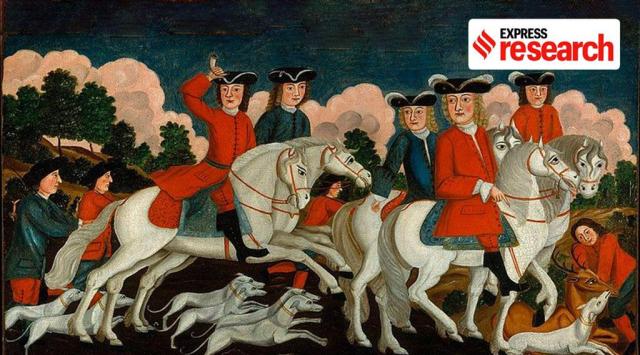 The hunt, reserved for dogs, horses and very rich men
The hunt, reserved for dogs, horses and very rich men Hunter. Conservationist: It may confuse some to conflate these two words, but for much of the 20th century, environmentalists across the world believed that hunting could play an important role in preserving natural ecosystems, either by controlling the ratio of predator to prey, or by generating revenue that could be funneled back into conservation efforts.
Those two words are also what many would use to describe Jim Corbett, the man who lent his name to India’s oldest and the most famous national park. Corbett rose to fame as a prolific hunter, tracking and killing dozens of man-eating tigers and leopards in the dense jungles of Uttar Pradesh and Uttarakhand
However, despite his hunting credentials, Corbett was also a keen environmentalist, advocating to preserve the habitats and species that his bullets simultaneously tore apart. While many of the animals Corbett killed were responsible for the deaths of local villagers, some, like the 10-foot-long Bengal tiger, known as the Bachelor of Powalgarh, were targeted solely for prestige and pleasure.
Significance of hunting
According to Henry Bunn, Professor of Anthropology at the University of Wisconsin, humans have used complex hunting techniques to kill large animals for at least two million years. While historians long maintained that our early ancestors survived on meat collected from dead or wounded animals, Bunn’s discovery of ancient carcasses proves that they actually identified optimal prey, choosing to kill animals in their prime.
Humans preferred adult animals, waiting in trees for them to gather, before spearing them at point blank range. Bunn’s discovery has profound implications on our understanding of human development, particularly in relation to how our brains evolved over time.
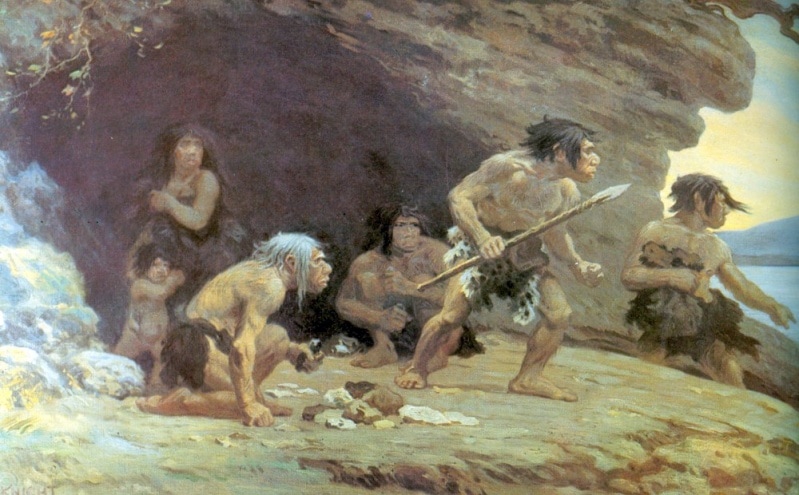 Restoration of Le Moustier Homo neanderthalensis by Charles R. Knight (Wikimedia Commons)
Restoration of Le Moustier Homo neanderthalensis by Charles R. Knight (Wikimedia Commons)
He theorised that once our species learned to create tools for hunting, it gained access to a new, protein-rich source of energy. As a result, we no longer needed to invest in internal resources on maintaining large digestive tracts, which were previously needed to process vegetation and fruit. Liberated from that task, we were able to redirect energy to other bodily functions, notably, the development of our growing brains.
Consequently, over the next two million years, the human brain grew proportionally larger than those of any other living organisms, allowing us to formulate advanced means of communication and other skills needed to sustain complex civilisations. According to Robert Ardrey, whose book African Genesis provides an influential insight on the topic, our ancestors’ urge to hunt and kill drove us to develop spears and axes, and to evolve bigger and better brains in order to handle these increasingly serpentine weapons.
The process of hunting also had implications on the prevalence of large animals in certain parts of the world. As Yuval Noah Harari argues in his book Sapiens, the human race originated in Africa, and evolved over time in tandem with local wildlife. As humans incrementally became more efficient hunters, animals in turn developed mechanisms like tusks and speed to evade capture. Due to these parallels, large animals in Africa were able to escape the clutches of our ancestors whereas animals in other regions were not.
As increasingly evolved humans migrated across the globe, animals in other parts of the world did not have the opportunity to warm up to humans, with large members of their species targeted by human colonisers. However, other giant animals, like the Asian elephant and Indian rhinoceros, have survived because of the pulsating way in which humans settled in the Indo-Malayan region.
Our ability to fashion deadly weapons made humans apex predators. For most of history, humans were the only species known to possess weaponry, but recent research suggests that may be about to change.
In 2007, researchers in Senegal observed that chimpanzees living in West Africa were beginning to create deadly spears from sticks and using those tools to hunt small animals. This represented the first routine production of weapons ever observed in animals other than humans. Describing the discovery, Jill Pruetz, lead researcher at Iowa State University, noted that chimpanzees used their hands and teeth to tear branches off trees and sharpen them at one end. Then, grasping those weapons in a “power grip,” the chimpanzees would jab them into hollow tree branches where bush babies sleep during the day.
“It was really alarming how forceful it was,” says Pruetz in the study, adding that it reminded her of the murderous shower scenes in Alfred Hitchcock’s Psycho.
While other species may be catching up, humans have had a massive head start — an advantage that explains our historic dominance. But hunting didn’t just serve a practical purpose, it also carried with it cultural significance.
The history of the hunt
Hunting has been an important aspect of religious rituals in many cultures. Hunting was revered in the past, and it was believed that a hunt’s success would win the gods’ favour. For instance, hunting was frequently shown in paintings and carvings in ancient Egypt because it was thought to be a way to appease the gods. It was viewed in the Hindu religion as a way to honour the gods, and some writings refer to it as a type of meditation.
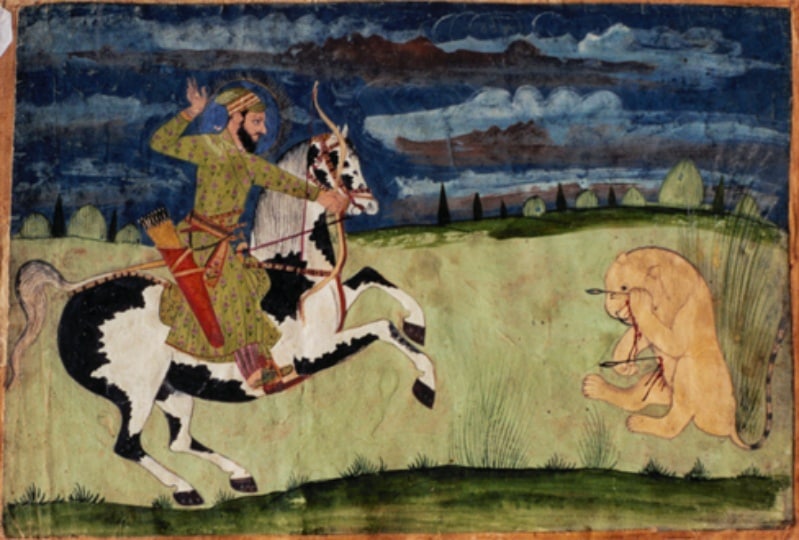 Guru Gobind Singh hunting a lion (Wikimedia Commons)
Guru Gobind Singh hunting a lion (Wikimedia Commons)
Hunting was an integral part of initiation rituals in many cultures. In some Native American tribes, for instance, young males would embark on a vision quest that required fasting, seclusion, and hunting. The young men had to bring home a prize from the hunt as proof of their bravery and expertise. Hunting was also a method to commemorate important life milestones like marriage, childbirth, and death.
Hunting has a long history of being connected to social prestige and authority. The ability to hunt has always been seen as a symbol of bravery, skill, and strength. Hunting was a privilege of the wealthy and influential in many civilisations, and it was considered as a sign of their rank and authority.
The elite enjoyed hunting in medieval Europe and would frequently embark on elaborate hunts with dozens of dogs, horses, and hawks. Hunting became a way for the elite to show off their money and power, and it began to be regarded as a status symbol.
The Field of the Cloth of Gold, a hunting expedition planned by King Henry VIII of England and King Francis I of France in 1520, is one legendary royal hunt that has been recounted throughout history.
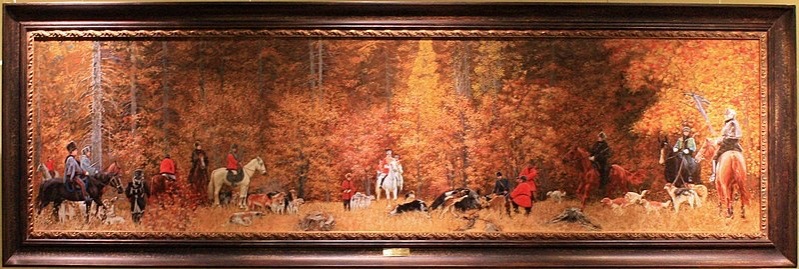 Painting by Russian artist Kozhin S.L (Wikimedia Commons)
Painting by Russian artist Kozhin S.L (Wikimedia Commons)
The celebration took place in a sizable meadow close to Calais that was lavishly draped in gold fabric for the kings and their entourages. The two monarchs and their courtiers participated in jousting, archery, and hunting, among other outdoor pursuits. Henry and Francis grew more competitive during the hunt, each trying to outdo the other with extravagant shows of riches and status. Despite their enmity, the two kings grew close throughout the occasion, dining together and conversing in their opulent tents.
With its magnificent displays of riches and power, The Field of the Cloth of Gold was a spectacle that caught the attention of Europe. Also, it was a significant event in diplomatic history since it was a rare instance of cooperation between two of Europe’s most embittered rivals.
The hunting trip was undoubtedly ostentatious, but it also gave the monarchs a chance to bond and build a relationship that would aid in preserving peace between their nations in the years to come. The Field of the Cloth of Gold continues to be remembered in the annals of European history as a symbol of the splendour and spectacle of royal hunting trips.
Because of the significance associated with the act of hunting, the practice was often used to designate class and hierarchy, being known as a kingly sport. In his overview of the history of hunting, historian Erich Hobusch shows how monarchs and emperors established their own exclusive hunting grounds and were willing to punish intruders — sometimes severely. Nearly as soon as stable governments came into power in the Middle East, Eurasia, South Asia, and Europe, varying degrees of elite monopolisation emerged.
The emphasis on killing top carnivores and other hazardous animals was another characteristic of hunting in the rising empires. According to classical archaeologist Judith Barringer, encounters with wild boar were frequently depicted during the hunt in ancient Greece. In India, the top hunters made a name for themselves by killing tigers and leopards, oftentimes in hand-to-claw encounters.
Colonisation of the hunt
The use of hunting to designate social status is perhaps best observed in colonial India. An insightful examination of the part that hunting played in British colonialism in India can be found in Vijaya Ramadas Mandala’s paper, Imperial Culture and Hunting in Colonial India (2018).
According to the author, hunting was an element of British imperial culture and was used to demonstrate manhood and imperial ruler status. Hunting was regarded as a pastime for the affluent class and developed into a method of maintaining social hierarchies in colonial culture. Because Europeans had access to hunting regions and animals that Indians could not, Mandala accentuates how British hunters in India were able to establish their domination over the indigenous population.
 Hunting portrait of man with fish and game birds (Wikimedia Commons)
Hunting portrait of man with fish and game birds (Wikimedia Commons)
As Joseph Sramek, a professor at Southern Illinois University points out in a paper titled Face Him Like a Briton, the British recognised the symbolism of hunting through their own experiences with the practice, and by observing its role during the Mughal empire. He asserts that for the British, tigers in particular represented the “all that was wild and untamed in the Indian natural world.” Thus, the spectacle of British aristocrats being photographed standing beside a dead tiger depicted the successful conquest of the Indian subcontinent.
For Indians looking to curry favour with the British, hunting would also prove to be a valuable inroad. In Shikar in the Princely Reserves, Mandala highlights how the maharajas of princely states used big game hunts as a means to form relationships with the British, demonstrating loyalty to the Crown and underlying critical political alliances between the princes and the Raj. For the British, Mandala states that the royal hunts “lent ritual credence to their political authority in a staged show of solidarity with the traditional rulers of the land.”
According to Foreign Service Office Parveen Kaswan, hunting was so prominent during colonial times that in 1878, the British government officially killed 1,579 tigers alone. The perspective of hunting has evolved over time — from being a survival necessity to being a status symbol. However, as recently as the 20th century, and in many parts of the world today, it is also recognised as an important conservation tactic.
Environmental impact of hunting
Although this represents a small fraction of state sanctioned hunting, it is important to note that the practice is often deployed to manage nuisance wildlife, by selectively removing problematic species from local ecosystems. One of the most famous examples of this is the Great Emu War of 1932 in Australia.
The incident was a reaction to a big emu population that had been seriously harming local farmers’ crops. To eradicate the emu population, the Australian government sent out a small squad of troops equipped with machine guns. The soldiers, though, rapidly discovered that it was challenging to strike the emus, and the operation was mainly ineffective. The emus were nimble and swift runners, making them a challenging prey.
The task was largely unsuccessful, as, according to a report by Major Gwynydd Meredith, Commander of the operation, “if we had a military division with the bullet-carrying capacity of these birds it would face any army in the world … They can face machine guns with the invulnerability of tanks.” The Australian government continues to contend with the destructive properties of emus and till date has been unable to eradicate them from vulnerable ecosystems.
However, nuisance management aside, as historian John MacKenzie points out in Empire of Nature (1997), by the start of the 20th century, the notion of the “great white hunter” transformed into “the great white photographer.” Like Corbett, famous hunters were seen as vanguards of the environment, playing an important role in the preservation of national parks and other wildlife areas. The argument is that as hunters draw attention and revenue to natural spaces, they in turn contribute to the long-term conservation efforts of the very spaces they prowl.
In many parts of the world, hunting is controlled by the selling of hunting licences. These licences contribute to the funding of conservation initiatives and studies. For instance, in Zimbabwe, the money made from hunting licences is used to support anti-poaching operations and conservation initiatives.
Trophy hunting has been demonstrated to be a successful conservation and management strategy in some nations where it is scientifically grounded and carefully managed, as acknowledged even by the World Wildlife Fund. That is especially true in regions where alternative income streams or land use policies are unlikely to generate enough incentives for conservation or bring in much-needed funding for people or wildlife (as opposed to other forms of land use).
For example, in Namibia, the sale of hunting licenses has been integral for the preservation of its rhino population. In 1990, the Namibian government introduced a controversial law to turn over ownership of certain natural spaces to communal conservancies run by local populations, some of whom had, until then also been poachers.
The idea of a conservancy was based on the theory that communal ownership would make illegal killing feel like stealing from the neighbours, leading to an increase in tolerance for animals and a decrease in poaching. And it was successful. Over 20 per cent of Namibia is currently under the jurisdiction of community conservancies, and 44 per cent of the nation is protected from development in some way. Wildlife populations have subsequently increased since the law was enacted.
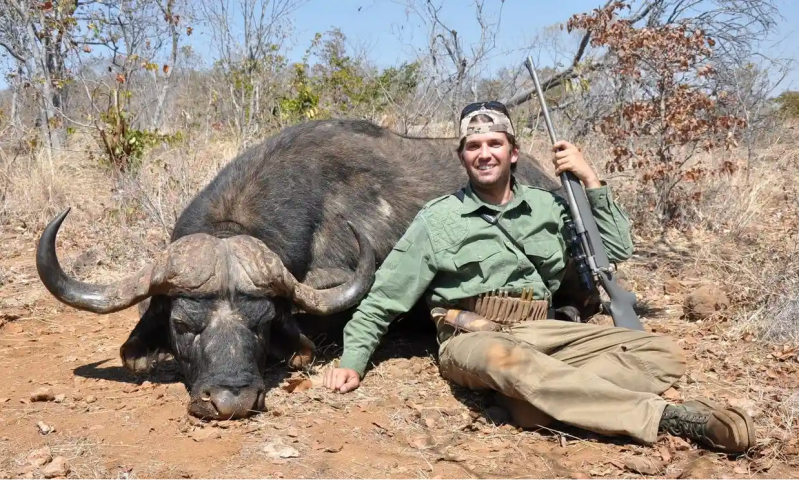 Donald Trump Jr on a hunting trip to Zimbabwe (The Guardian)
Donald Trump Jr on a hunting trip to Zimbabwe (The Guardian)
In Namibia, like in South Africa, individuals are permitted to purchase hunting licenses, some which cost up to USD 350,000, with the proceeds going into a trust supporting wildlife conservation. However, as the case of South Africa demonstrates, such policies are only effective when implemented properly.
According to a report by the International Union for Conservation of Nature published in 2009, sport hunting in West Africa provides few benefits to the surrounding communities. A more recent report from 2018 by the Australian Humane Society International found that trophy hunting amounts to less than two per cent of tourism revenue in the eight African countries that permit it.
In a CNN interview, Jeffrey Flocken, who oversees the International Fund for Animal Welfare’s North American division, said, “this philosophy — that you must kill an animal to rescue it — does not make sense from a moral, economic, biological, or conservation-incentive point of view.”
Differing policies between states that share common wildlife reserves also complicates matters. As Joyce Poole, who has studied African elephants in the wild for decades notes, when Kenya banned hunting in 1973, Tanzania continued to permit legal hunting, leading to devastating effects for the local elephant population. “It was an awful time,” Poole recalled, “because on one side, the elephants learned to trust tourists — generally white people — in cars” and when they would then cross over to the other side, they would approach those same cars, often to be met by the end of a rifle.
Whether it be used for sport, conservation or necessity, hunting, if unregulated, and approached with little regard for natural ecosystems, can be destructive to local wildlife species. Taken out of its historical context, it can also be considered ridiculous as a practice itself.
As the American poet Ogden Nash wrote:
The hunter crouches in his blind
‘Neath camouflage of every kind.
And conjures up a quacking noise
To lend allure to his decoys
This grown-up man, with pluck and luck
is hoping to outwit a duck.
- 01
- 02
- 03
- 04
- 05































